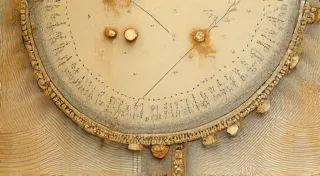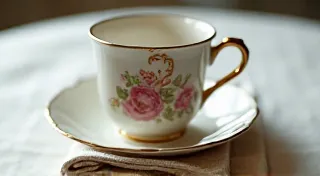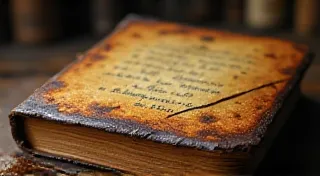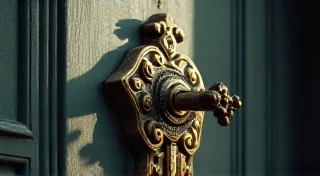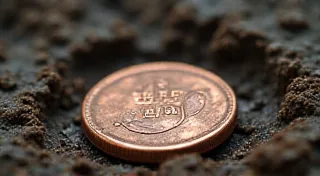A Journey Through Time: Exploring the World of Antique Cameras
Welcome to a unique exploration of antique cameras, a world where technology, art, and history intertwine. This isn't just a collection of objects; it's a portal to a bygone era, a testament to human ingenuity, and a celebration of the art of visual storytelling. Whether you’ve inherited a family heirloom or are just beginning to appreciate the beauty of early photographic equipment, you're sure to find something of interest here. This site is dedicated to exploring collecting, understanding photography history, and appreciating the allure of these incredible artifacts, particularly collectible cameras. We’re not just talking about dusty relics; these are windows into the lives and times of those who came before us, captured in beautifully crafted and meticulously engineered machines.
The development of photography was a monumental achievement, built upon the shoulders of countless individuals pushing the boundaries of scientific and artistic possibility. Understanding the history of antique cameras requires appreciating the challenges faced by early pioneers—their struggles and ultimate triumphs. Before the convenience of digital sensors and instant feedback, photographers battled unpredictable chemicals, rudimentary lenses, and hours-long exposure times. This journey begins with understanding "The Luminary’s Burden: The Challenges and Triumphs of Early Photographic Pioneers." Figures like Nicéphore Niépce, Louis Daguerre, William Henry Fox Talbot, and George Eastman fundamentally reshaped how we perceive and document the world. Their initial experiments, fueled by curiosity and a desire to permanently capture reality, laid the groundwork for the modern photographic industry. Understanding photography history is crucial to appreciating these devices, especially when considering the rarity and desirability of collectible cameras. These aren’t just tools; they’re time capsules, tangible links to an era when patience, skill, and artistry were paramount.
The Lens: Shaping Perception and Defining an Aesthetic
The heart of any camera is its lens. Early lens designs dramatically influenced the look and feel of photographs, shaping the aesthetic of entire eras. Unlike the often-uniform look produced by modern multi-element lenses, antique cameras often employed single or double lenses with inherent imperfections. These imperfections, far from being flaws, contributed to the unique charm and character of historical photographs. Delve into "The Alchemy of Light: How Early Lens Design Shapes Perception" to discover how these optical systems created the characteristic softness, flares, and unique qualities that define historical photographs. The lens construction, often involving complex grinding and polishing techniques, showcased the craftsmanship of the era. From the Petzval lens, known for its swirly bokeh, to the early rapid rectilinear lenses striving for sharpness, each design imparted a distinct visual signature. Beyond the mechanics, the bodies of these cameras often held secrets—engravings, repairs, and markings that tell silent stories. "Beyond the Lens: The Biographies Imprinted on Antique Camera Bodies" explores these personal narratives. Many of these antique cameras are now highly sought after by serious collectors, and finding pristine examples of collectible cameras can be a rewarding pursuit. The value isn’t just about scarcity; it's about preserving a piece of photographic history and appreciating the artistry involved.
The film itself played a crucial role. Early photographic processes, such as the daguerreotype, calotype, wet collodion, and dry plate processes, each demanded specific equipment and skills. "Chromatic Whispers: How Early Film Stock Defined an Era's Aesthetic" unpacks this vital connection. These weren’t simple roll films like we’re accustomed to; they were often delicate glass plates or pre-prepared paper negatives requiring meticulous handling and processing. The long exposure times necessitated the use of tripods and often involved portraits of individuals who had to remain perfectly still for extended periods – a testament to their patience and the photographer’s skill.
Rarity, Innovation, and the Collector’s Eye
The world of antique cameras holds countless treasures, each with its own story to tell. "A Cabinet of Curiosities: Unearthing the Rarest and Most Peculiar Antique Cameras" showcases some of the most extraordinary examples. Consider the Goerz Drop Lens cameras, known for their distinctive circular bokeh, or the Thornton-Pickard cameras, pioneers in roll film photography. These aren't just rare due to scarcity; they represent pivotal moments in photographic innovation. Serious collectors often specialize in specific types of cameras, eras, or manufacturers, actively seeking out collectible cameras in excellent condition. The pursuit isn't just about acquiring a beautiful object; it’s about uncovering a piece of history, understanding the technical ingenuity of the era, and appreciating the artistry of the photographers who used these instruments. Consider how technological advancements were predicted and reflected in camera design – as explored in "The Mechanical Oracle: Predicting Technological Shifts Through Antique Camera Design." The legacy continues to resonate, as captured in "The Temporal Tapestry: Weaving Stories Across Generations with Vintage Photographic Gear." The evolution from bulky, cumbersome daguerreotype cameras to the more portable and user-friendly box cameras of the early 20th century exemplifies this continuous drive for innovation.
Capturing Moments: Narrative and Social Significance
Antique cameras weren’t just tools for creating images; they were instruments of social documentation and personal expression. "The Silent Witness: Cameras as Records of Social Change" examines their role as historical witnesses. During the American Civil War, photographers like Mathew Brady risked their lives to document the horrors of battle, providing a stark and unprecedented visual record of conflict. Early photography played a crucial role in preserving family memories, capturing portraits of loved ones who might otherwise be lost to history. Consider the significance of carte de visite photography, a hugely popular form of portraiture in the Victorian era, allowing people to share images of themselves and their families. And when those images tell a story of individuals, consider the power of facial expressions and the significance of capturing a moment – see how "The Echo of a Smile: Reconstructing Lost Stories Through Historical Photographs" illustrates the importance of that visual record. "The Cartographer of Moments: Framing Narrative with Early Photographic Equipment" reveals the artistry of composition and perspective, techniques honed over decades of practice. Beyond the technical aspects, early photographers possessed a keen eye for detail and a profound understanding of how to convey emotion and narrative through the lens.
Technical Challenges and Artistic Mastery
Working with antique cameras requires a level of technical understanding and patience that is rarely demanded by modern photography. "The Phantom Aperture: Deciphering Lost Settings in Antique Cameras" offers insight into overcoming these challenges. Focusing, exposure calculation, and chemical processing were all far more complex than simply adjusting settings on a digital camera. The lack of instant feedback meant that photographers relied on their experience and intuition to achieve the desired results. For those interested in the nuances of exposure, "The Dance of Light and Shadow: Mastering Zone System Techniques with Vintage Cameras" provides an advanced look. The zone system, developed by Ansel Adams, while primarily associated with large format photography, offered a framework for understanding exposure and contrast that can be applied to antique cameras as well. Understanding the quirks and limitations of each camera model is crucial for achieving optimal results. These aren’t machines to be treated with casual indifference; they are complex instruments deserving of respect and careful handling.
The Beauty of Imperfection & The Passage of Time
Unlike the often-sterile perfection of digital images, antique photographs possess a unique charm derived from their imperfections. "The Grammar of Grain: Understanding Film Aesthetics in a Digital Age" delves into the artistry of film grain, a characteristic often overlooked or digitally eliminated in modern photography. These aren’t flaws; they’re an integral part of the photographic process, adding texture and depth to the image. And, like all things, these treasures are susceptible to decay. "The Rusting Lens: An Exploration of Decay and Preservation in Antique Photographic Equipment" examines the challenges and importance of preserving these pieces of history. Proper storage, careful handling, and occasional restoration are essential for ensuring that these photographic treasures endure for generations to come. The value of these cameras, for serious collectors, and especially for those seeking collectible cameras, can be quite significant. The patina of age, the subtle scratches, and the occasional chemical stain all contribute to the character and history of each piece.
Finally, many of these cameras have become cherished family heirlooms, connecting us to past generations. "The Keeper of Memories: How Antique Cameras Became Family Heirlooms" tells their story. Passing down a camera that has captured decades of family history is a powerful way to preserve memories and connect with ancestors. These are more than just objects; they are tangible links to the past, symbols of tradition, and reminders of the enduring power of photography.
We invite you to explore the site and discover the fascinating world of antique cameras – a world where art, technology, and photography history converge. The world of collecting, and specifically pursuing collectible cameras, is both rewarding and challenging. It’s a journey of discovery, a celebration of craftsmanship, and a profound appreciation for the history of visual communication.
Discover also: "Ephemeral Impressions: The Art of Cyanotypes and the Poetry of Blue" and explore the unique and beautiful cyanotype process. Or, consider the exploration of absence, as revealed in "The Ghost in the Brass: Exploring Absence in Pre-War Photographic Portraits." And lastly, appreciate the constant evolution of the craft, examined in "The Weight of Progress: Examining Obsolescence in Photographic Innovation."
Further Resources:
- Antique Camera Collectors of America (ACCA): A national organization dedicated to the preservation and study of antique cameras.
- Online Forums and Communities: Numerous online forums and communities dedicated to antique photography offer valuable information and opportunities to connect with fellow enthusiasts.
- Museums and Historical Societies: Many museums and historical societies feature collections of antique cameras and photographic equipment.



